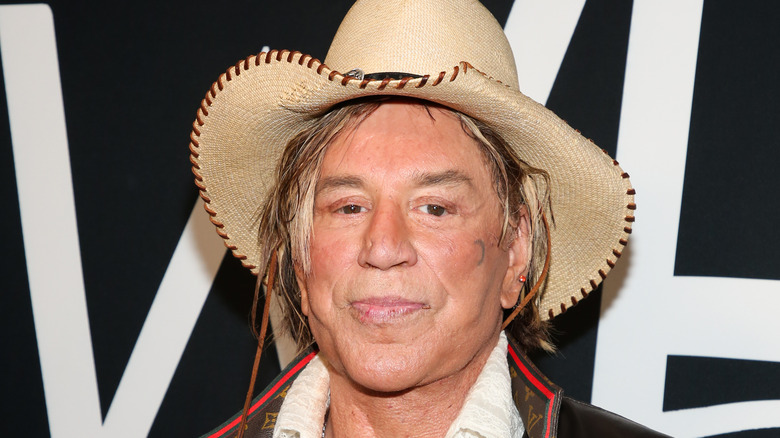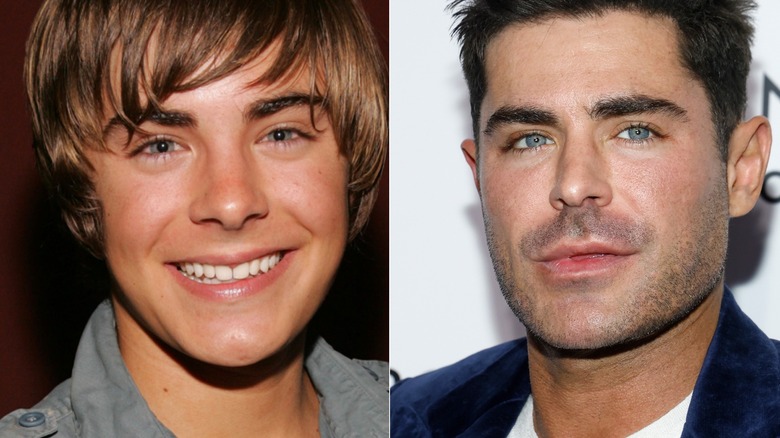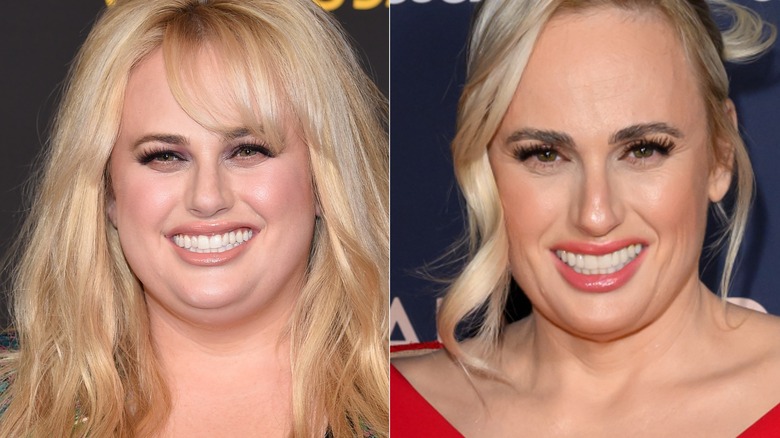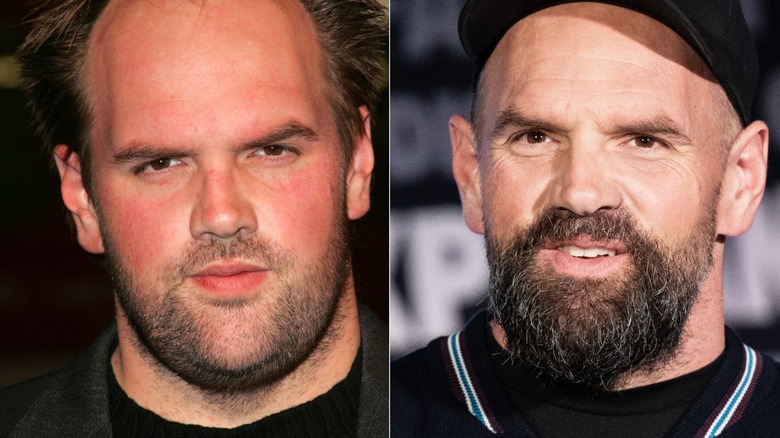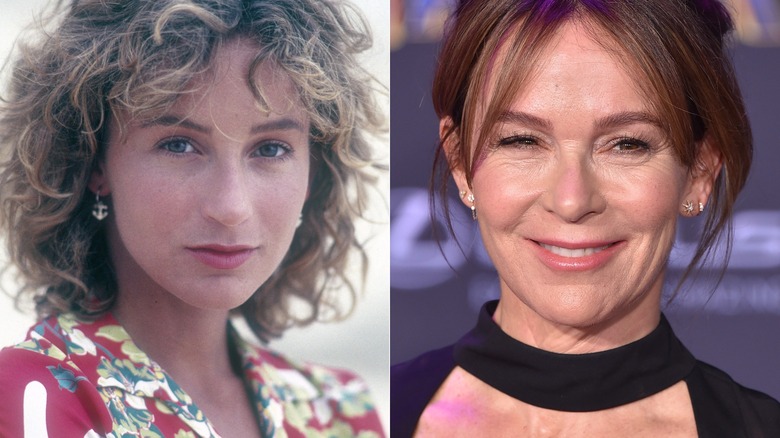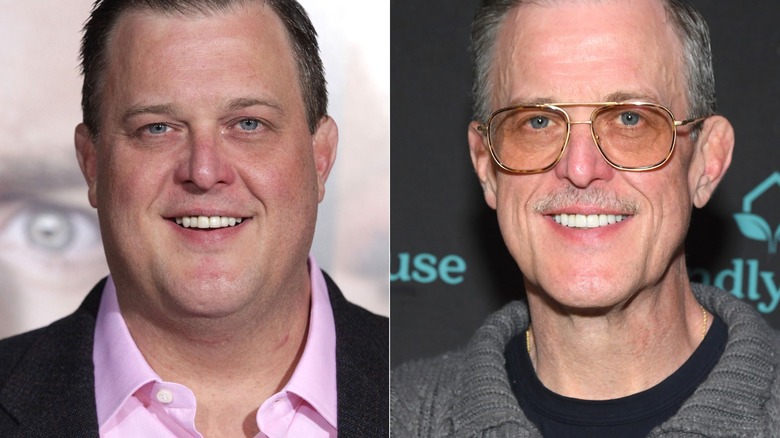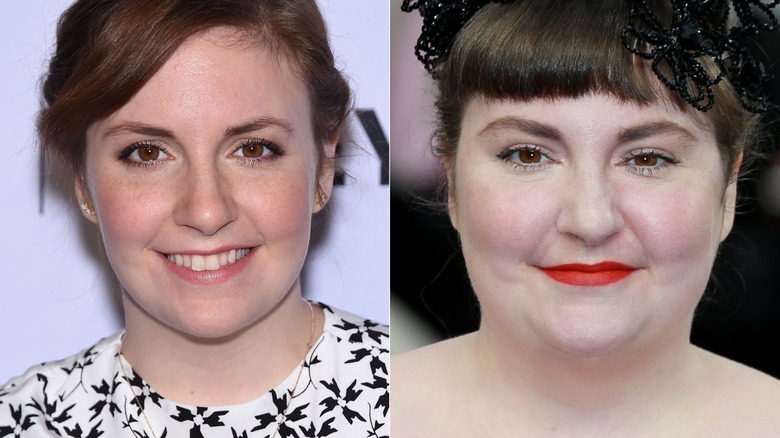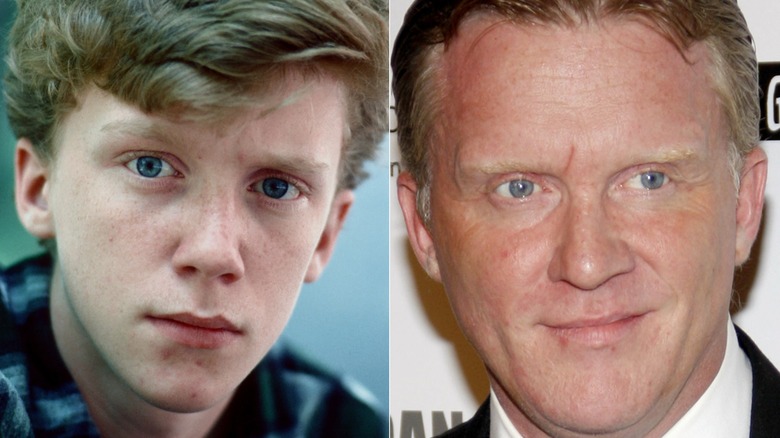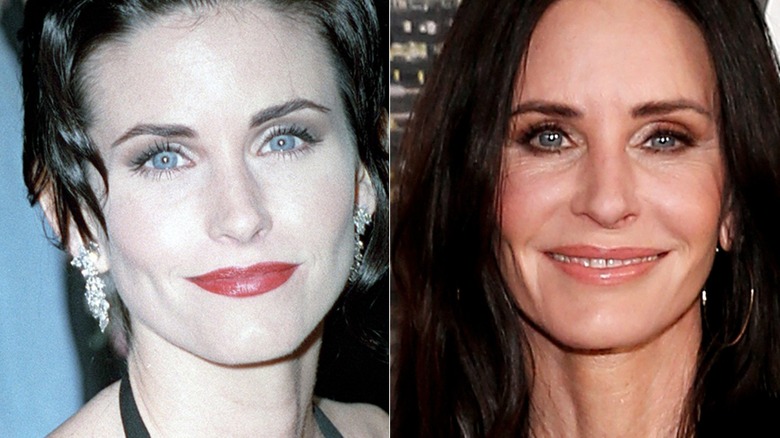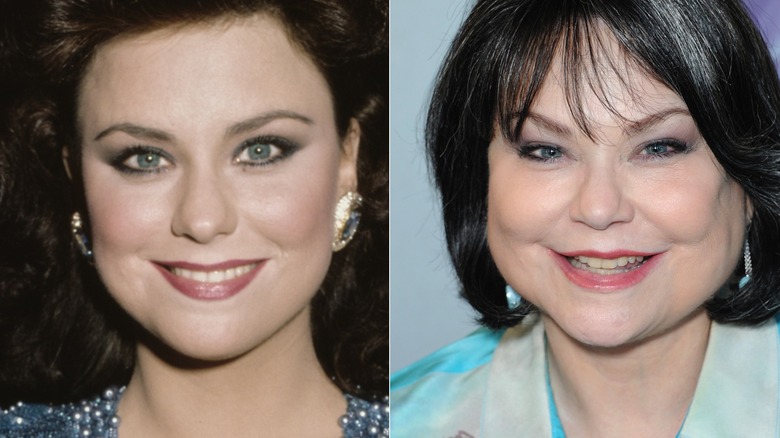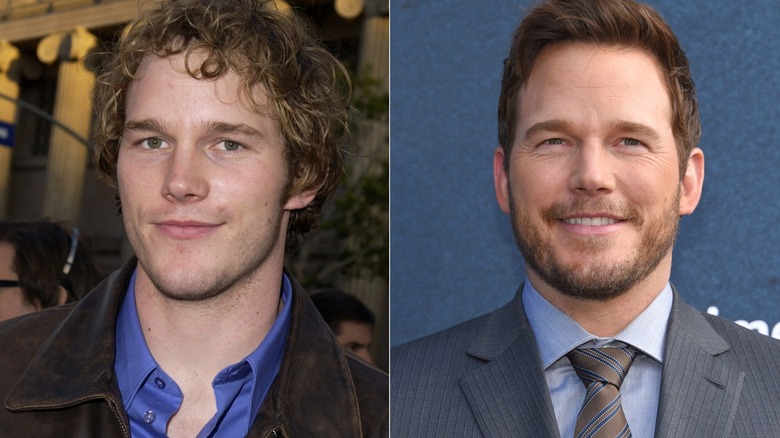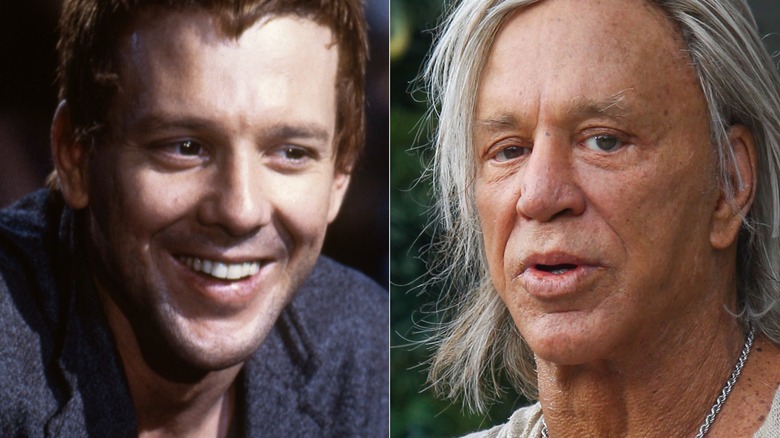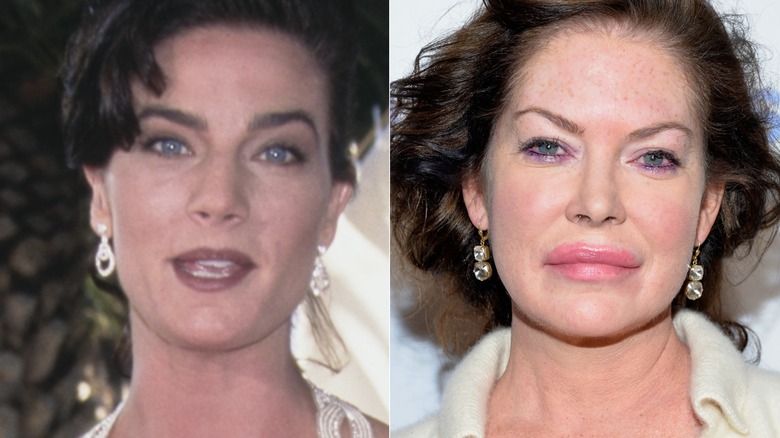Actors Who Look Nothing Like They Used To
By and large, actors are among the most physically striking among us, and yet they — like the rest of us mortals — are not immune to change. It seems like professional performers are locked into a particular appearance in the collective consciousness, having made an indelible impression on the world through their beloved roles in popular movies and television shows. But those big stars do transform, whether it be slowly or quickly, by exercise, diet, time, illness, injury, elective surgery, critical surgery, or choice. The result: An actor whose image is indelibly etched in the minds of millions, shows up on screen or at an event looking radically different from how they once did.
It's hard not to notice, and while they don't have to explain, these actors often tell the public why they're just not the same as they used to be. Here are some of the biggest movie and TV stars whose appearances have altered significantly from the time they first found fame.
Zac Efron
Thanks to his work in three "High School Musical" movies for Disney in the 2000s, Zac Efron was one of the most prominent and popular teen idols for a whole generation. He fit the mold of a "Tiger Beat" pinup, with big blue eyes, a mop of hair, and a wide smile which he often affected while singing pop songs. Unlike some child stars who completely disappeared, Efron navigated the difficult transition to adult roles, starring in dramas like "The Paperboy" and film comedies including "Neighbors" and "Baywatch," in which he showed off a newly developed ultra-muscular physique. After Efron's near-death experience and the release of"The Iron Claw" and "Ricky Stanicky," Efron's appearance had noticeably changed. For example, his lips had grown puffy, and his once big eyes had narrowed on a once-angular but now large and rectangular face.
So many fans speculated about Efron that plastic surgeon Dr. Sam Rizk submitted to an interview with the New York Post to discuss the actor. In 2013, Efron suffered a jaw break, and Rizk thinks that changed the shape of the actor's face. "He probably took the opportunity, in addition to correcting it, to do something better," Rizk said. "He might have had jaw advancements where they pull the chin a little bit more forward because his chin looks a little bit more prominent," the surgeon added, also pointing out that the actor's higher-situated eyebrows and larger cheeks indicate other cosmetic enhancements.
Rebel Wilson
The Australia-born actor Rebel Wilson found success in the U.S. with roles in "Bridesmaids" and the "Pitch Perfect" movies, where she played a character actually named Fat Amy. Her team shut down any talk of weight loss. "Basically no one apart from my mum wanted me to lose weight," Wilson told The Sunday Times. "People thought I'd lose my pigeonhole in my career, playing the fat funny character, and they wanted me to continue in that."
Wilson approached a fertility specialist in 2019, considering freezing her eggs in advance of pregnancy at a later date. The doctor told her the procedure would be more effective if the actor lost weight. Over the span of 2020, Wilson shed more than 80 pounds. "It wasn't a goal to get to a certain weight. It was just being the healthiest version of myself," Wilson told People. Still addressing the psychological roots of her dietary habits, and feeling stress from acting and writing her memoir, Wilson announced in 2024 that she'd reacquired 30 previously lost pounds. "I'm really proud of the work I've been doing," Wilson wrote on Instagram, "it's just been a LOT."
Ethan Suplee
In the 1990s and early 2000s, Ethan Suplee almost always played kind-of-dumb guys whose appearance was a big part of their personality. Like Suplee, his characters were heavyset or large men, like school bully Frankie Stechino in "Boy Meets World," Magic Eye poster-riled William in "Mallrats," and Randy in "My Name is Earl." In 2009, after "Earl" was canceled, Suplee decided that a change was in order, and he systematically used exercise to transform his body. "I started obsessively riding bicycles. I actually did get properly thin at one point — I was nine percent body fat," he told Entertainment Weekly in 2017.
But when he started going out for auditions with his new body, Suplee was met with confusion and resistance. "I found that people were like, 'Who are you? We don't know you. You're this new person.'" That led Suplee to ease up on his intensive exercise regimen of six to eight hours of bicycling six days a week. "I'm not going to kill myself to be thin when nobody knows me as a thin person, and I do think it is affecting the kind of jobs I'm getting." Suplee nearly didn't land his major role in the 2016 Hulu series "Chance" because of his alterations. "The casting directors didn't want me to come in because I'd lost a bunch of weight. The casting directors were like, 'No, he's too thin now.'"
Jennifer Grey
One of the biggest new stars of the 1980s, Jennifer Grey appeared in a string of classic films of the era, including "Red Dawn," "Ferris Bueller's Day Off," and "Dirty Dancing." Grey seemed to have a long and illustrious career ahead of her, but by the early '90s she was reduced to starring in forgettable made-for-TV movies like "Eyes of a Witness" and "Murder in Mississippi." What happened? Grey underwent an elective cosmetic surgery so drastic that it rendered her unfamiliar to audiences and casting directors.
Grey's nose was a unique and defining physical feature, and it set her apart from other actors of her age and stature who, for the most part, all sported smaller smellers. Her 1989 rhinoplasty, intended to be a minor procedure, completely changed the shape of her nose, and subsequently her face. "I went in the operating theater a celebrity and came out anonymous," Grey told The Mirror in 2012. "It was like being in a witness protection program, or being invisible."
Billy Gardell
Billy Gardell's persona and work once revolved around his status as a large guy, including a standup routine featuring lots of self-deprecating jokes. From 2010 to 2016, he starred in "Mike and Molly," a sitcom about a couple who meet at an Overeaters Anonymous meeting. When the COVID-19 pandemic erupted in 2020, Gardell quarantined himself when he realized he had many of the medical conditions that would make him more susceptible to dying from the virus. "Overweight. Type 2 diabetes. Smoker. Asthma. I'm like, 'Check! Check! Bingo!'" he said on "Live with Kelly and Mark" in April 2024 (via Just Jared).
After he could be vaccinated against COVID-19, Gardell underwent bariatric weight-loss surgery. The comic says his weight peaked at 370 pounds during the run of "Mike and Molly," and by 2024, his number floated around 200 pounds. "I went from young Jackie Gleason to old Paul Newman," Gardell quipped about his change in appearance.
Lena Dunham
After writing and directing some indie films, Lena Dunham moved to HBO in 2012 as the creator and star of the millennial dramedy "Girls." Dunham, who wasn't as thin as stars of American television shows generally are, earned a lot of online commentary during the first few seasons of "Girls," and faced more derisive talk after a 2017 weight loss."It's just so crazy because I spent six years of my career being called things like 'bag of milk' on the internet," she said on "The Ellen Degeneres Show" (via The Hollywood Reporter). "And suddenly I got all of these people being like, 'You're a hypocrite. I thought you were body-positive." Dunham lost weight as a side effect of treating her endometriosis with nutrition and exercise.
In October 2021, Dunham's weight became a discussion topic once more, when distributed photos of her wedding indicated that the actor and filmmaker appeared heavier than she had been during the making of "Girls." Dunham explained that she had in fact gained weight, and that it was a very good thing. "The pics I'm being compared to are from when I was in active addiction with undiagnosed illness," Dunham wrote on Instagram. "I've gotten sober and begun my life as someone who aspires toward health and not just achievement."
Anthony Michael Hall
Anthony Michael Hall is probably still best known for his first major roles during the 1980s. In a series of films written and/or directed by John Hughes, teenaged Hall played undersized, scrawny high school-age dweebs, geeks, and nerds, like Rusty Griswold in "Vacation," Farmer Ted in "Sixteen Candles," Gary in "Weird Science," and Brian Johnson in "The Breakfast Club" — one of the best films mostly set in a single room. Following a brief stint on "Saturday Night Live," Hall returned to film in the late '80s and early '90s, suddenly playing the opposite of those quintessential movie nerds: muscle-bound athletes and bullies in films like "Johnny Be Good" and "Edward Scissorhands."
Ever since, Hall has continued to portray mostly jacked tough guys and imposing authority figures. The shift in roles came from a shift in appearance. After those nerdy parts, Hall gained a lot of weight and he filled out, acquiring a lot of muscle. "There was a horrific rumor that was going around about steroids," Hall said on an America Online live chat in 1998. "The weight gain was natural."
Courteney Cox
Figuring into the lesser-known part of Bruce Springsteen's life as a dancing fan in the "Dancing in the Dark" music video, Courteney Cox forged a career as one of the most prolific and quintessential sitcom stars in TV history. Following a recurring role on "Family Ties" as the first love of Alex P. Keaton (Michael J. Fox), Cox became one of the most famous people on the planet for her 10-season role as fastidious chef Monica Geller on "Friends." Cox then went on to anchor "Cougar Town" for six seasons.
The shape of Cox's face changed over time, and the actor blames her use of treatments and procedures. "It's a domino effect. You don't realize that you look a little off, so then you keep doing more, 'cause you look normal to yourself," Cox said on the podcast "Gloss Angeles" (via the Los Angeles Times) in 2023. Cox admitted that over her time in the spotlight she perhaps over-utilized dermal fillers, inserted under the skin to ease wrinkles and add plumpness. "Thinking that I was getting older when I was really young, that's just a bummer," Cox said. "I messed up a lot, and luckily I was able to reverse most of that. And now I'm just older."
Delta Burke
Before she was an actor, Delta Burke dominated her local beauty pageant circuit. In a realm where extreme svelteness was the expectation, Burke weighed 110 pounds, a number achieved through the use of sketchy amphetamines. "My mother kept finding me draped over shrubbery or chairs because I'd pass out," Burke told The New York Times about her early adulthood, when she was named Miss Florida and competed to be Miss America. In 1986, 30-year-old Burke began a stint as former beauty queen Suzanne Sugarbaker on the sitcom "Designing Women." At the time, she weighed 145 pounds; when she left the show in 1991, following harsh press attention and one of the biggest scandals to hit CBS — the amphetamines had stopped being effective — Burke's weight approached 200 pounds.
Years of obsessing over her weight culminated in binge eating and weight gain, which brought out depression and anxiety. But, utilizing therapy and medication, Burke owned her changing body, writing "Delta Style: Eve Wasn't a Size 6 and Neither Am I!" and launching a line of plus-size clothing for women. "I thought: This is the size I am. I don't want to be this, but I don't know that I'll ever lose it, and if that's the case, I might as well come to terms with it." The actor also admitted to some cosmetic surgery, undergoing a lift procedure to remove fat pouches on her face.
Chris Pratt
Now an A-list movie star headlining action blockbusters like "Jurassic World" and the Marvel Cinematic Universe's "Guardians of the Galaxy" franchise, Chris Pratt was once known primarily as a TV actor, and one who specialized in playing slacker boyfriends who could be described as chubby. After four years on the teen soap "Everwood" as Bright Abbott, he joined the cast of "Parks and Recreation" as dim shoeshiner, amateur guitarist, and beer enthusiast Andy Dwyer.
During his seven-season run on the NBC sitcom, Pratt landed roles in films that demanded a certain body type — a Navy Seal in "Zero Dark Thirty" and a Major League ballplayer in "Moneyball." With a lean protein-based diet and a fasting program, Pratt lost 60 pounds, then gained back a lot of it for the comedy "Delivery Man." After landing the part of space pirate Peter Quill in "Guardians of the Galaxy," Pratt lost weight and gained a lot of muscle with a punishing exercise and lifting routine. On "Parks and Recreation," Andy's physical transformation was explained away by his decision to quit drinking beer.
Mickey Rourke
The two biggest eras of Mickey Rourke's acting career each come with their own distinctive look. In the 1980s, the young actor affected a brooding leading man sensibility in acclaimed dramas like "Body Heat," "Diner," "Rumble Fish," and "The Pope of Greenwich Village." After disappearing into B-movies and erotic thrillers like "Wild Orchid" and "Angel Heart," Rourke re-emerged in the 2000s to play older, tougher, downtrodden, and world-weary characters in "Sin City" and "The Wrestler," the latter earning him an Academy Award nomination for Best Actor.
The Rourke of the 2000s barely resembled the Rourke of the '80s, and according to the actor, that's the result of boxing injuries and complications. Before Hollywood came calling, Rourke fought on the amateur circuit and resumed the sport during a career downturn in the 1990s. "I had my nose broken twice. I had five operations on my nose and one on a smashed cheekbone," he told The Daily Mail. "I had to have cartilage taken from my ear to rebuild my nose and a couple of operations to scrape out the cartilage because the scar tissue wasn't healing properly." On top of all that, Rourke required some cosmetic surgery to make sure everything wound up looking the way it should. "But I went to the wrong guy to put my face back together," he said.
Lara Flynn Boyle
Bursting onto the scene as Donna Hayward on "Twin Peaks," a show famous for storylines that came out of nowhere, Lara Flynn Boyle enjoyed a huge career in the 1990s. After portraying stalker Stacy in "Wayne's World" and Suzanne in the indie cult classic "Red Rock West," Boyle became best known for playing ADA Helen Gamble on "The Practice" for six years.
As far as her appearance went, Boyle had delicate facial features and an extremely thin frame, for which she endured scrutiny and believes may have even cost her acting jobs. Boyle says that the simple act of aging may have also derailed her career after the '90s ended. "I know I may be running out of time," she said in 2002, according to The Daily Mail. "There are just not that many roles for older women. On a vanity level, I am not looking forward to aging at all — I think I look pretty good now."
In the years that followed, Boyle started to show up to events looking little like the famous star of screens big and small. Her cheeks appeared to be fuller and her lips significantly larger, among other changes. Beverly Hills plastic surgeon and "Botched" star Dr. Paul Nassif suggested that several procedures would explain the actor's 2000s look. "Lara Flynn Boyle appears to have had rhinoplasty, lip augmentation, Botox, facial fillers, and possibly a browlift and facelift," Nassif speculated to The Daily Mail.
If you or anyone you know needs help with addiction issues, an eating disorder, or mental health, contact the relevant resources below:
-
The Substance Abuse and Mental Health Services Administration website or contact SAMHSA's National Helpline at 1-800-662-HELP (4357).
-
The National Eating Disorders Association website or contact NEDA's Live Helpline at 1-800-931-2237. You can also receive 24/7 Crisis Support via text (send NEDA to 741-741).
-
The Crisis Text Line by texting HOME to 741741, call the National Alliance on Mental Illness helpline at 1-800-950-NAMI (6264), or visit the National Institute of Mental Health website.
